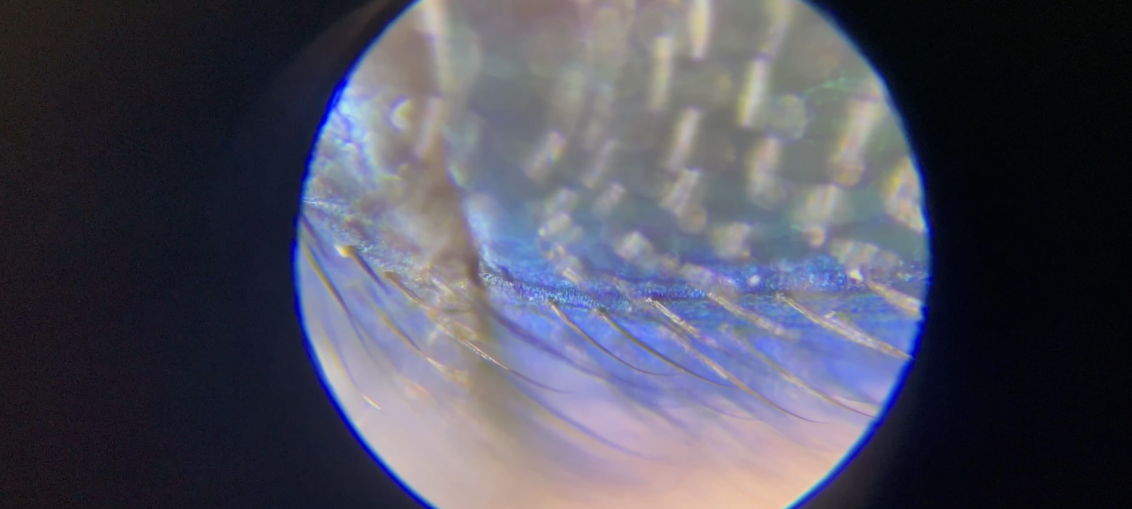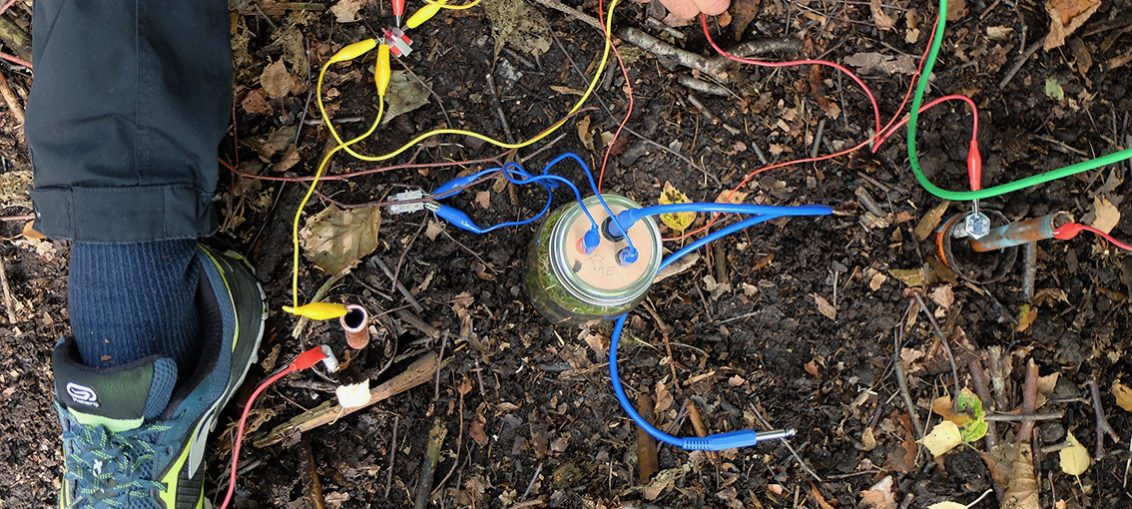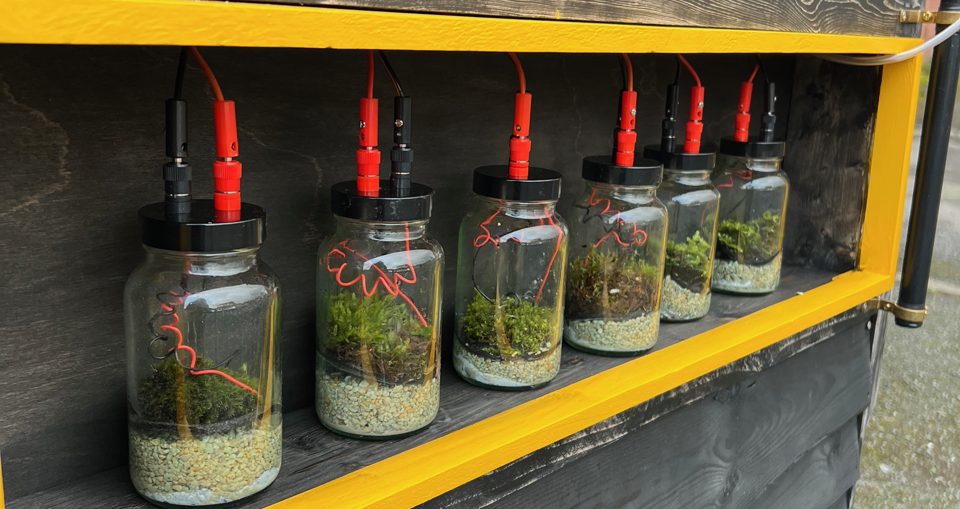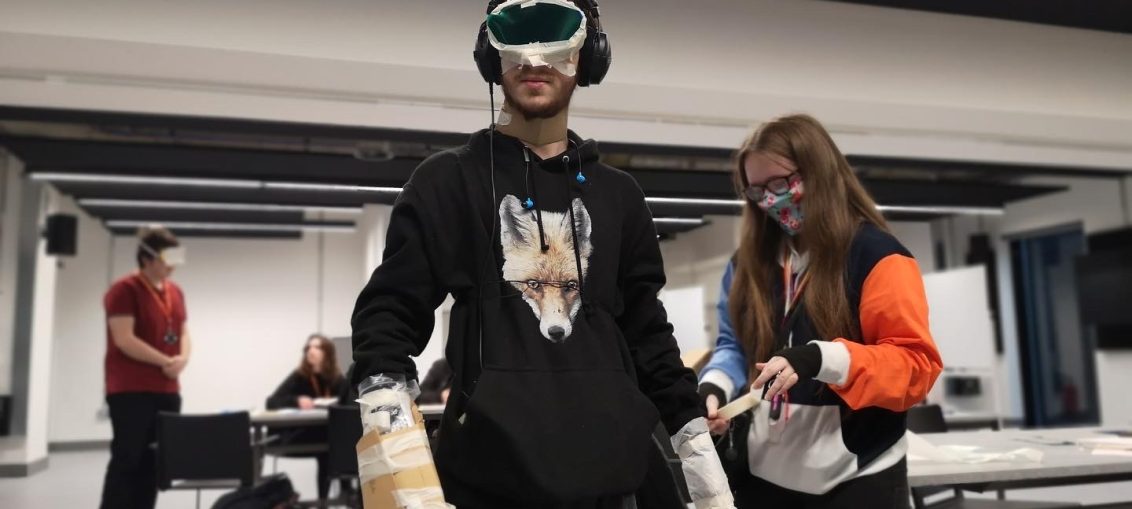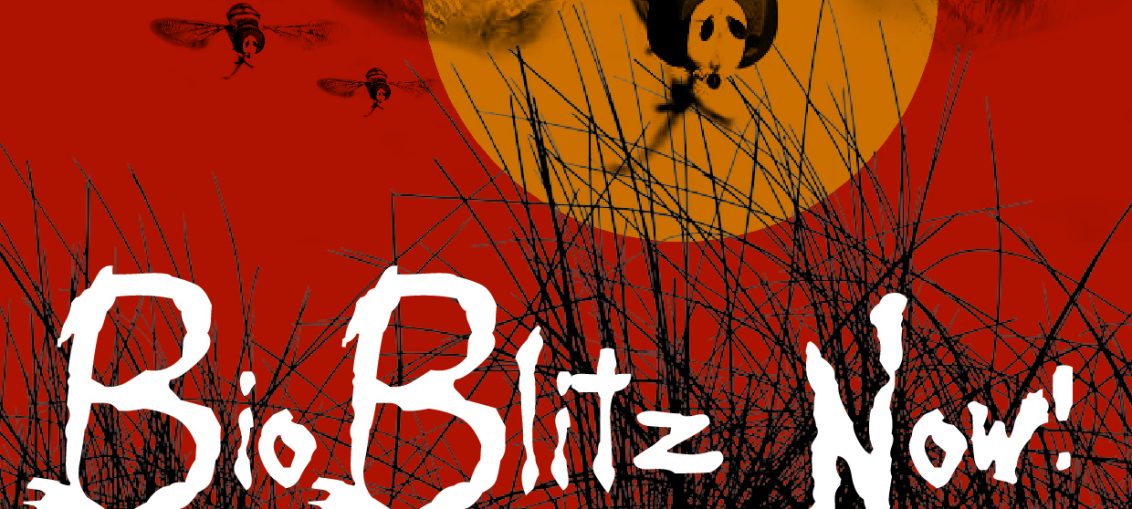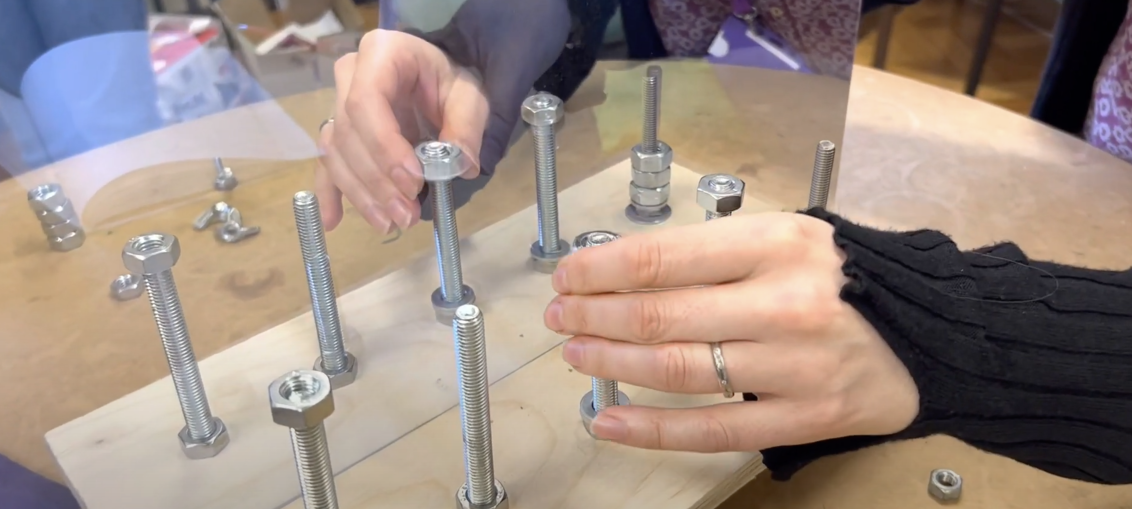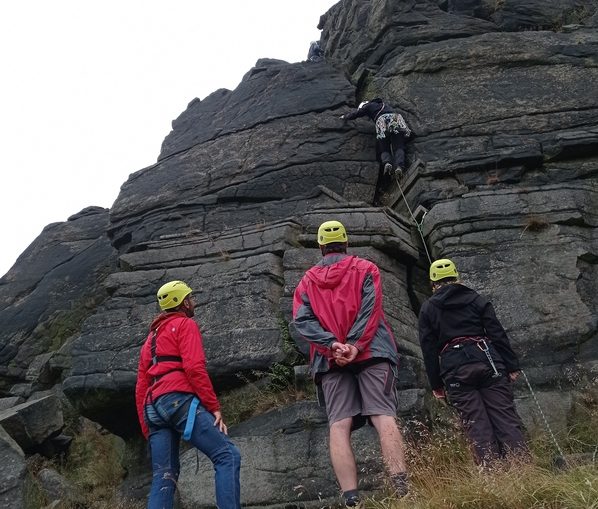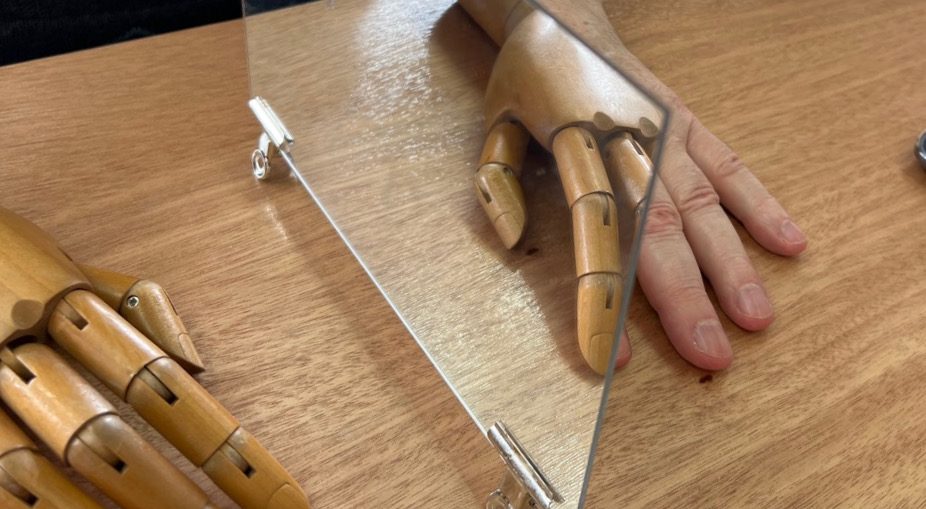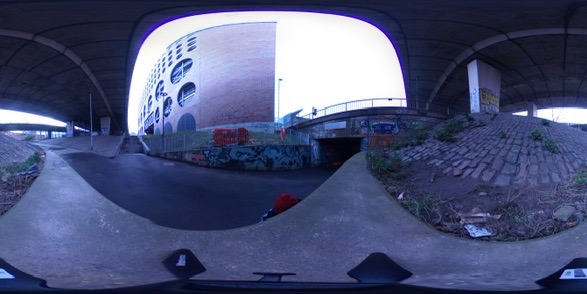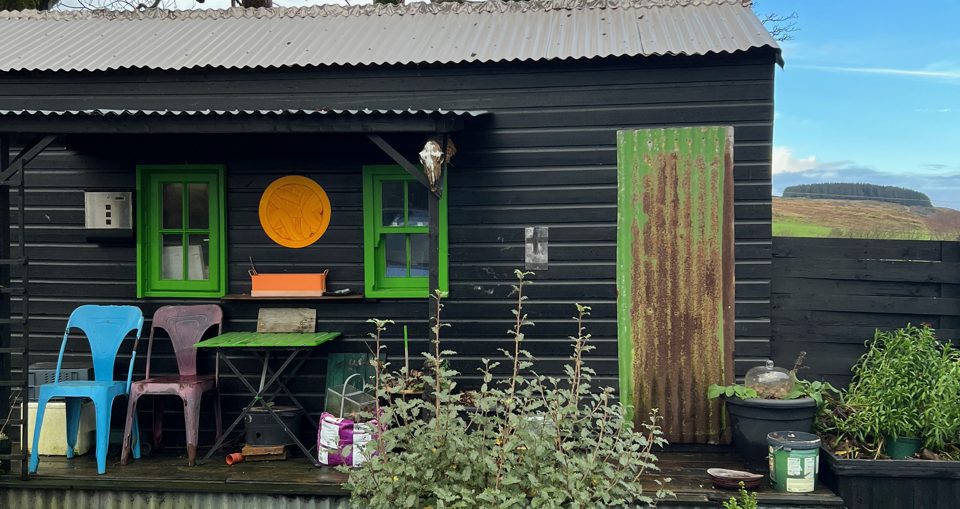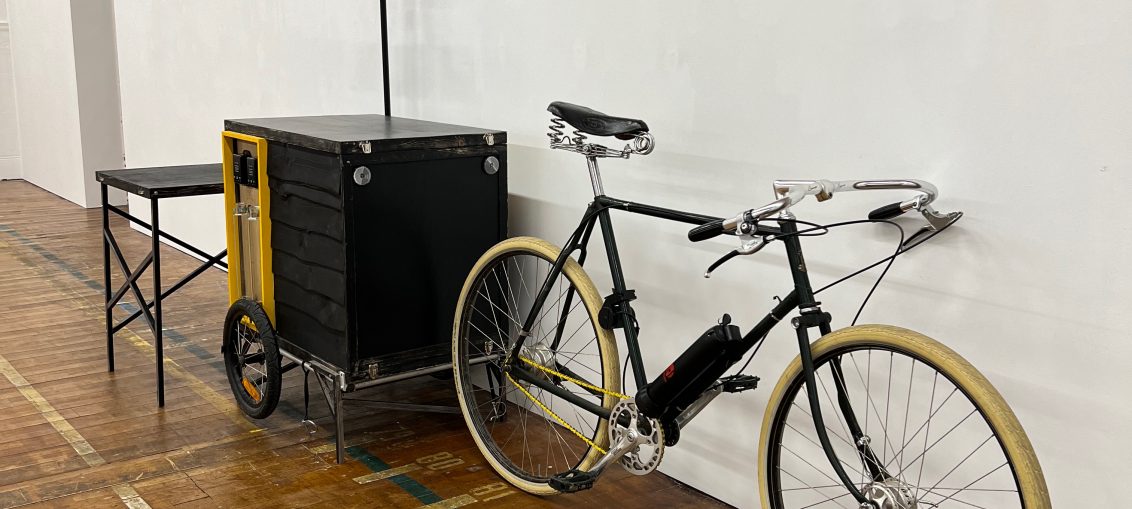Instagram takeover October 2022
Author: antonyhall
What is it that I do?
The question, "But, what is that you actually do?" [1] was posed to me as an impressionable master's student [2] after having presented my entire portfolio of work; the question perplexed me because, at that time, my practice was still developing, and I still wasn't entirely sure what it was that I was doing. Later as an emerging professional artist discussing practice, this straightforward yet wise advice was given by a curator; 'Think of a thing that you do, and keep doing it' [3]. The thing was, even though there was clearly 'a thing that I did', having embarked on the foundational works that would inform my practice for many years to come, it took years to realise what it really was that I did. My Tabletop Experiments
DYCP – Funding 2022-23
I am delighted to announce I was awarded a DYCP grant from Arts Council England to develop my creative practice, enrich networks and also undertake training. I plan to meet mentors and fellow artists for a series of creative collaborations and conversations. Here are some highlights from the project: Highlights will be posted on this page while a series of posts are listed on the following tag: https://antonyhall.net/blog/tag/ace-dycp/ View this post on Instagram Moss Walk for SPARK artists Network A post shared by Antony Hall (@tonazoid) Now is the Time of Moss 2022 - A series of 10 terrariums created from found materials
Boundary Detector Workshop / Part – 2
17/09/2022 Second Workshop at Longdendale Environmental Centre as GUIDEline project with Glassball Studios: In this workshop, we continued to work on our boundary detectors; moss terrariums with carbon and aluminium layers which act as electrodes. In my test, I used moss growing on a carbon graphite felt layer (the anode), over a granular substrate of Zeolite (the electrolyte, but in the workshop, we used grit and mud collated from the boundary). The base of the jar is covered with aluminium foil (the cathode). As the moss photosynthesises and microbes do their thing - electrons are exchanged between the two electrodes generating electricity (more info on the science at end of this post). However, it is as yet unclear exactly how
Boundary Detectors workshop / Part – 1
1/09/2022 Workshop / Longdendale Environmental Centre / GUIDEline project with Glassball Studios: We met at Longdendale environmental centre for a day of walking and micro exploration, following a segment of the peak district boundary. The idea was to walk slowly, looking closely while collecting samples (microscopic creatures, plants, minerals, sounds), and explore how these things interact within the hypothetical space of the boundary space. Above: Image by Cora Glasser / Glassball Studios. We discussed 'boundary layers' the spaces or microenvironments existing on surfaces or between objects and the free-flowing stream of air (gasses, humidity) and light. Mosses exist at specific boundary layers, miniature forests which act like environmental bubbles, trapping moisture, and creating shelter. Moss and other small plants Algae, and Lichen
Moss batteries and art bike convoys (Newsletter Sept 2022)
Hi - I have a few things coming up that I am excited to share (and since I don't do newsletters often, I added a paragraph to cover the last 4 years). I also got some ACE DYCP funding which will keep my research on ecology and perception going into 2023! This summer, I have been busy with Field Station at Art bomb and exploring the Peak District National Park boundary as part of the GUIDline project with Glassball studios. This week I am showing at the British Science Festival Leicester. Next week I am exhibiting with the para lab group (showcasing collaborations between artists and scientists) and running a moss and micro-terrarium workshop as part of Unintended consequences at Quarry Bank Mill. Follow hyperlinks or scroll down for dates
Mirror gaze experiment at British Science Festival 14th Sept.
Documentation from the Mirro Gazing workshop as part of the British Science Festival 14th Sept. The workshop was broken into 20min slots over the day and took place inside a black-out tent on the grounds of De Montfort University outside the gallery. View this post on Instagram A post shared by Dr. Antony Hall (@tonazoid) https://britishsciencefestival.org/event/seeing-is-believing/ Book Tickets here https://britishscienceassociation-tickets.ticketsolve.com/ticketbooth/shows/1173626542
Manchester Vision Network 2022 Research Showcase
It was fascinating to run a workshop on the strange face illusion during the Manchester Vision Network 2022 Research Showcase with many scientists from a range of different fields... NEXT UP: British Science week Sept 14th 2022 "..the fifth staging of this annual event provides a multidisciplinary forum for clinicians (including ophthalmologists, optometrists, orthoptists and specialist nurses), researchers and technology developers interested in ophthalmic and vision science. Our main aim is to stimulate individuals from different fields to exchange ideas and potentially establish fruitful collaborations... More info... Mirrors ready for the workshop Mirror Gaze Experiment - Experience in progress...
GUIDEline Micro-Commission
Exploring the nature and origins of the first National Park and its boundary. I have been commissioned as part of the GUIDEline project by Glassball Studio. Over the summer Alison Lloyd and I will be working alongside Glassball, continuing a conversation that started back in 2021, bringing our practices to the boundary of the Peak District National Park, using the Longdendale Activity Centre as a base from which to explore. Here are some outcomes, ideas and works in progress so far... Walk with Tim Cambel-Green View this post on Instagram A post shared by Dr. Antony Hall (@tonazoid) Walking with Tim - exploring these
Imagine you are walking
How long does it take to imagine an action? I have been thinking about motor observation and motor imaging as part of the Experience in Action project with BEAM Lab. How does imagining or observing an action affect how we later perform that action? I know that before I do anything significant I imagine it or visualise it, a mental simulation repeating over and over many times. I will plan to make something in my head, in my own personal imaginary 3-D workspace before making it. However, I have never thought about how long these things take to imagine. In the following visualisation activities - I became aware of how my thoughts cycle in loops at speed, often viewing the situation
Field Station at ARTBOMB 22
Joana Chicau - Chris Dobrowolski - Antony Hall - Jola Kudela - Rob La Frenais - Loré Lixenberg - Dave Lynch - Matthew Rosier - Sidney Sparks - Filipos Tsitsopoulos - Miranda Whall Inari - Linda Cassels We are in a Climate Emergency and our festival will help you consider what you can do to help. ArtBomb 22 is Doncaster's experimental arts festival and designed to help provoke debate across current environmental and ecological thinking...by commissioning world-class art to spill onto the streets of Doncaster with a programme of performance, film, music, talks and workshops across multiple sites - including the architectural jewel in the crown - Doncaster's Unitarian. View this post on
Perception changing device workshop 2022
These workshops took place at the School of Digital Arts (SODA) as part of the 'Co-Lab' unit, which is intended to get students working collaboratively across disciplines (Game design/sound/future media/film/photography). The 'messy interface' brief asked students to address the complex interface between real and unreal. My workshop was designed to get students working together and thinking about how our senses interact and how we can hack, or creatively disrupt the sensory interface. We looked at the long history of perception-changing technologies; from the microscope to early VR experiments, and the many strategies both artists and scientists have used to disrupt these technologies. After exploring some perceptual illusions and discussing our experiences, participants designed their own multisensory experiments that restricted, augmented,
Ferrofluid Workshop
Highlights from a workshop using ferrofluids with young people as part of National Saturday Club for the Photography dept. at School of Digital Arts (SODA). Ferrofluid is a fascinating material with alien-like behaviours. We used macro lenses and experimented with moving magnets using a motor and adding inks and dyes with mesmerising results. If you are interested in this workshop please contact me info(at)antonyhall.net
Proximity- Residency at Rogue project space
Proximity Collective In Residence at Rogue Project Space: 11th April - 5th May 2022 Proximity is a collective of 6 artists interested in the spatial and social elements of practice-as-research (established May 2019). Through a series of in-person residencies across the north of England and regular virtual meet-ups, we have developed our approach of “convivial aesthetics” and provide one another with professional, creative, and emotional support. During our residency at Rogue Project Space we will continue to explore different ways in which our proximity to each other can create new ideas, ways of thinking, and strategies for making and thinking art. View this post on Instagram
24 hour Bioblitz, Highfield Country Park
Sunday 12th June 2022Highfield Country ParkDrop-in events between 10 - 10.30 pm. We need your help! A BioBlitz is an intensive collaborative race against the clock to document as many different living things in a defined area within 24 hours [from huge trees to microorganisms]. Join artists and scientists and other local nature enthusiasts at the Bee Sanctuary, Highfield Country Park. Learn about nature recording identifying plants and animals, and help contribute to scientific research. Bring your phone to take photos, download the iNaturalist app and make an account. Everything you record on the 12th of June in Highfield park will count towards our Bioblitz event database. Or just come along and explore Highfield and enjoy nature. 10 am to 4 pm:
Experience in action: Work in Progress
This page has some notes and background info on the activities and experiments we are employing for the Experience in Action project with Body Eyes and Movement (BEAM) Lab at the University of Manchester. As part of my PhD research, I ran a number of workshops on perceptual illusions (all inspired by research at BEAM Lab and conversations with Dr. Ellen Poliakoff who also acted as one of my PhD supervisors) . The workshops often used the Rubber Hand illusion (RHI) and its many variations as a starting point. I gave participants instructions and asked them to experiment with different stimuli materials and arrangements and devise new experiments of their own. I found that observing participants experimenting and playing with ideas,
Maths Art Group
Art & Maths: Imaginary Numbers, the Haptic Sublime and the Art of Solving Problems Annie Carpenter, Anthony Hall, Michelle Harrison, Matthias Heil, Andrew WilsonFrom a mathematician’s point of view, solving a problem is not simply about the end result, it could be about finding a novel or elegant way to get there. The group presents artefacts related to a question they have discussed at length - is solving a new maths problem like setting a new climbing route? They admit to being no closer to answering this question but the journey has been an interesting one.
Biomaterials and future cities
Manchester Art Gallery Easter workshops with Antony Hall and Aled Roberts 6-16/04/22 This was a series of 7 workshops at Manchester Art Gallery as part of the Field Station project. Aled Roberts is a material scientist developing bio-materials made from non-toxic waste products as alternatives to cement that can be used to capture carbon(or even as a building material on mars). Cement and concrete account for 8% of global greenhouse gas emissions. For comparison, the aviation industry accounts for 2.5%. In the workshop, we created and tested new bio-composite materials. Some super-strong materials were invented alongside many explosive failures. This was a fantastic workshop which engaged families, children and adults equally. Many great conversations were had in relation to climate change
BIOBLITZ – Platt Hall
Platt Hall and Garden Open Day Saturday 2nd April Field Station set up outside the wonderful Platt Hall as part of their open day. I invited people to take part in an intensive BIOBLITZ. That is, documenting all living things in the area, from trees to moss and microorganisms. We placed a series of quadrants [square metres] to see where the most biodiverse sites are around the building]. I shared techniques for hunting and documenting creatures and provided ID resources; microscopes and macro-lenses to get close-up views of what we found. All the results were logged throughout the day on iNaturalist. See https://uk.inaturalist.org/projects/field-station-bioblitz-at-platt-hall Images from the BioBitz at Platt Hall and some wildlife recording prep at Debdale park a few
Experience in Action
Notes on basic editing for 360 VR footage
Notes on basic editing of 360 footage from the Rico Theta V using iMovie from immersive experience workshop. Once your films are transferred from the Richo Theta V camera to your device in the app you have two ways to edit this footage. Firstly, using the app to do basic edits and upload directly to youtube, or importing the video to your phone or desktop and then editing it using Imovie or Premier. Here is a basic guide specifically for the Richo Theta V. Use the Theta + APP:The easiest way seems to be to use the Richo theta+ app to do basic edits. From the app., you can share directly to YouTube in 360 VR format. See Richo + tutorial here Export
Revos Ebike Conversion Kit
Thanks to Revolution Works revolutionworks.com for supporting my project with one of these Revos Ebike conversion kits. See my review here when it's done. https://revolutionworks.com/ Field Station is a mobile resource [a bike trailer] used for pop-up interventions and workshops developed as part of a Climate Change Awareness Project With Manchester Art Gallery. As Field Station develops, the trailer structure is getting increasingly heavy [see the work in progress here]. Towing a heavy trailer on the flat is was no problem - but slow going. Luckily for me, sub-urban manchester is relatively flat, but there are a couple of key hills and numerous steep inclines that are particularly challenging. So I decided to look to get some electrical assistance. I didn't want
Field Station
Field Station – trailer design and inspiration…
This page shows some of the motivation, inspiration and design ideas used in the Field Station project, see the work in progress here. Over the last few years, I have been loading my bike with increasingly heavy loads for field research style workshops sometimes in remote locations. More recently I have been mapping my local 'research realm' that I can access from my doorstep by bike, the sub-urban postindustrial outskirts of south manchester, interesting ecological sites, reclaimed rubbish tips, canals rivers and obscure ponds. These are often less picturesque in-between spaces that have been neglected by the local council, often prone to fly-tipping. Middlewood Trust WorkshopUnder the Darkest Sky [Above some more remote areas to which I travelled to by bike with insanely heavy loads of
FIELD STATION [work in progress]
This page documents the process of creating Field Station, from the original concept (a mobile ecological lab towed by bicycle) to the practical details of working through problems in the studio and foraging for materials, to the final result in Mid February 2022 [See workshop details here]. You can see some of the trailer design inspiration here, and details about the e-bike conversion using the Revos Ebike conversion kit here. Field Station [Commision] Field station is designed as a mobile resource used for pop-up interventions and workshops as part of a Climate Change Awareness Project With Manchester Art Gallery. The project aims to raise awareness and enhance perceptions of the unnoticed and sometimes invisible non-human inhabitants of the urban environment. Participants encountering Field Station will be invited
Perception Group exhibit Para-lab Report 2021
para-lab Perception Group: Antony Hall and Ellen Poliakoff.The perception group explore the creative possibilities of re-creating experimental psychology within the context of an expanded [collaborative and interdisciplinary] art practice. The group work with aspects of sensory deprivation and multisensory illusion ( the clay hand illusion, ganzfeld and strange face illusion) which combine touch sound and visual elements. Artefacts include outcomes from the 'Experiments in art and perceptual illusion project' a PhD project by Antony Hall based on collaborative work with experimental psychologist Ellen Poliakoff. The exhibit consisted of workshop editions resources, instructions, diagrams and a collaborative research paper co-authored by Hall and Poliakoff [More information on para-lab report 2021 here...].
The sound of Moss
Recordings of the sound of dry clumps of Moss rehydrating [various species] growing in the woods Alderley Edge, absorbing the moisture from a fine vapour, using hydrophones put into the soil underneath the moss. See https://www.invisibleworlds.ac.uk/ . This is a technique I developed through the bryophytes project at Gallery Oldham. Antony Hall · bio-crust study: Moss rehydration
Moss Map
During a residency with Gallery Oldham (2021) I worked with bryological (moss) specimens collected from the local area 150 years ago. This inspired a series of meandering walking workshops focused on revisiting and recollecting mosses from my local area. Meandering is a form of walking fieldwork where participants engage in a series of "focused distractions"—activities like collecting, sampling from the environment, and microphotography—to redirect their attention and uncover alternative perspectives. The Moss Map serves as a multi-layered, always changing, exploration of experience and memory, documenting a meandering research journey. See Bryophytes project with Gallery Oldham Images from the 'Proximity' exhibition At Abingdon Studios 26 Aug – 16 September 2021. The 'Moss Map' and bottle terrariums were created as part of the bryophytes project
Unfeasible object workshop at Manchester Science Park
Thu, 23 September 202110:00 – 14:00Location: Manchester Science Park, Bright Building, Pencroft Way, Manchester, M15 6GZV During this workshop, you will be guided through several activities and perceptual illusions to focus the senses before building objects for the ‘Clay Hand Experiment’ and the ‘Unfeasible Object’ experiment. The CHI is based on the Rubber hand illusion; only in the CHI and Unfeasible object experiments, participants build their own hand and other non-hand like objects rather than using a replica rubber hand. Using clay, it is possible to distort and manipulate the clay beyond the form of a hand and create different degrees of ‘unfeasible objects’ and attempt to embody these as part of our own body image. The workshop explores the possibility
para-lab report
para-lab invite you to join us as we come together to display and discuss a series of ongoing collaborations between artists and scientists. The report will be presented through artefacts accumulated from the process of collaboration, as well as workshops and a mini-symposium (free) registration on Eventbrite) to contextualise the work. The weekend acts as a marker along the path of long-term, open-ended collaborations and a platform for the participants and the public to get together in real life after so long operating only online. Open to the public: Rogue Project Space, Thursday 23rd September, 6 - 8Saturday 25th September, 11- 5, Sunday 26th September, 12 - 4.


